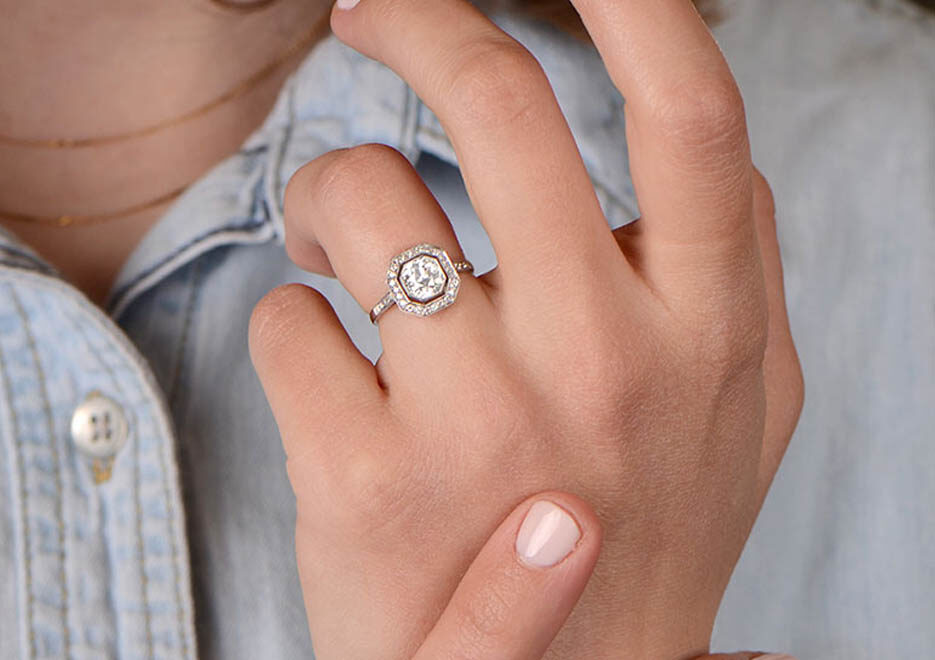Purchasing a diamond ring can be a significant investment, especially if you’re looking for a larger stone, such as a 3 carat diamond ring. With so many factors to consider, you may wonder how much a ring of this size and quality should cost. However, there is no one-size-fits-all answer to this question as diamond prices vary depending on several factors. The cost of a diamond is commonly determined by its Carat weight, Cut, Clarity, and Color, also known as the “Four Cs.” However, other factors such as Fluorescence and Certification may also affect the price. Therefore, it’s crucial to consider all these factors before determining the cost of a 3 carat diamond ring.
In this article, we’ll provide you with essential information that can help you determine the cost of a 3 carat diamond ring, as well as factors to consider when making this investment. Whether you’re shopping for an engagement ring or simply looking to add a stunning piece to your jewelry collection, this article will help you make an informed decision.
Factors That Affect the Price of a 3 Carat Diamond Ring
When it comes to purchasing a diamond ring, the cost depends on various factors. The price of a 3 carat diamond ring is no different. The cost of a 3 carat diamond ring is determined by the 4Cs – cut, clarity, color, and carat weight. Each of these factors plays a significant role in determining the value of the diamond ring.
The cut of the diamond ring is the most important factor that affects the cost of the diamond. The better the cut, the more expensive the diamond ring is. The clarity of the diamond is also a critical factor in determining the price of the diamond ring. The more flaws the diamond has, the lower its value.
Another important factor that affects the cost of a diamond ring is its color. The colorless diamonds are the rarest and most valuable, making them the most expensive. A diamond’s carat weight is the last factor that affects its cost. The larger the carat weight, the more expensive the diamond ring is.
- Cut: A well-cut diamond sparkles and reflects light better, making it more expensive.
- Clarity: The fewer the inclusions, the higher the diamond’s value.
- Color: The less color a diamond has, the more valuable it is.
- Carat weight: A diamond’s weight is directly proportional to its value.
To determine how much a 3 carat diamond ring should cost, one should consider all of these factors. The value of a diamond ring is subjective, and it ultimately depends on the buyer’s preference and budget.
Frequently Asked Questions about 3 carat diamond ring price:
Where To Buy 3 carat diamond ring
To genuinely secure the best deal on a 3-carat diamond, we suggest considering online shopping. Firstly, purchasing a diamond online can result in savings of up to 40% when compared to brick-and-mortar retailers. Secondly, 3-carat diamonds are quite rare. It’s highly likely that a local jeweler will have a limited selection, possibly offering only one or two choices that may not align with your budget or desired specifications.
In contrast, online stores boast a more extensive array of options. For instance, James Allen currently features hundreds of high-quality 3-carat diamonds (H+ color, VS2+ clarity). This provides you with a greater variety to choose from, ensuring you find the perfect match for your preferences.

As a jewelcraft master, I have spent years honing my craft and perfecting my skills in creating beautiful, high-quality fine jewelry. I take great pride in my work, and I am always striving to create pieces that are unique, elegant, and timeless. In addition to creating jewelry, I also love to share my knowledge and passion with others through writing. That’s why I enjoy blogging about fine jewelry, where I can provide insight into the design process, share interesting industry news and trends, and offer tips on how to care for and style jewelry.




